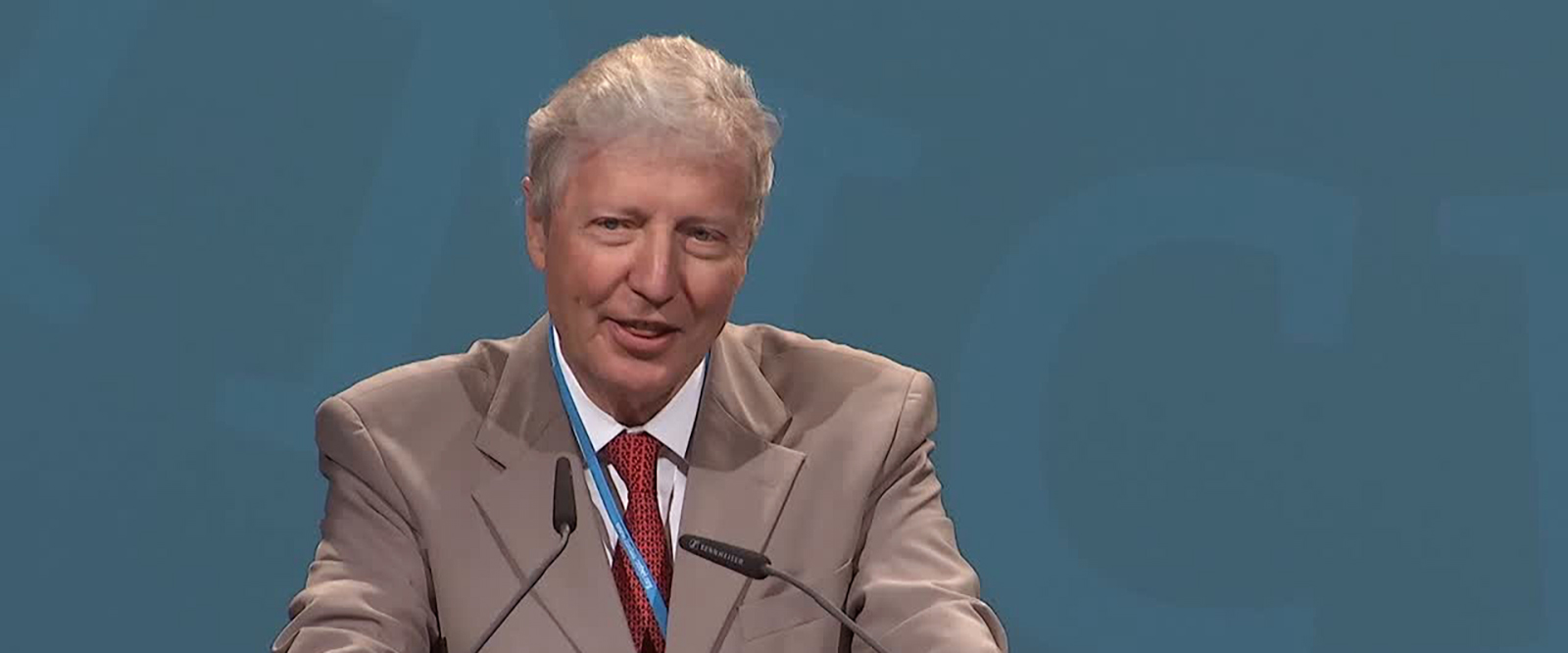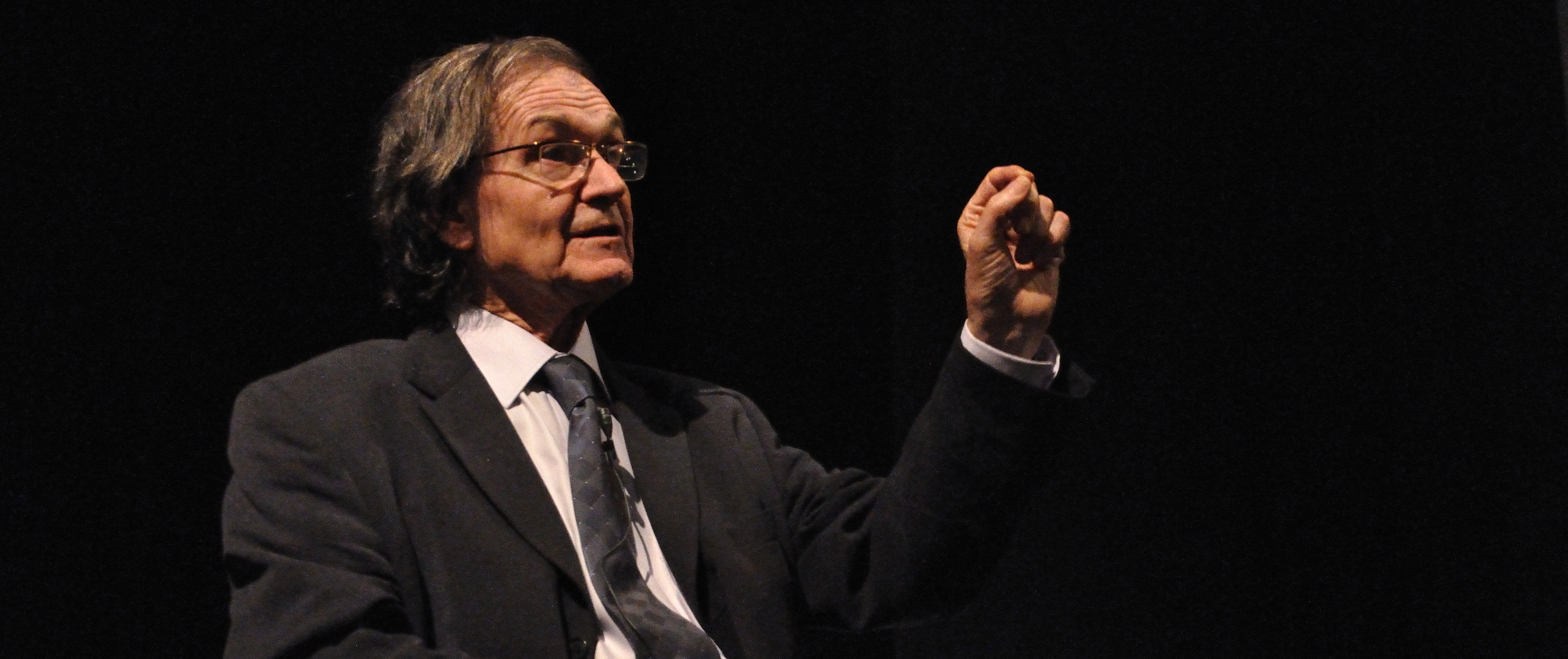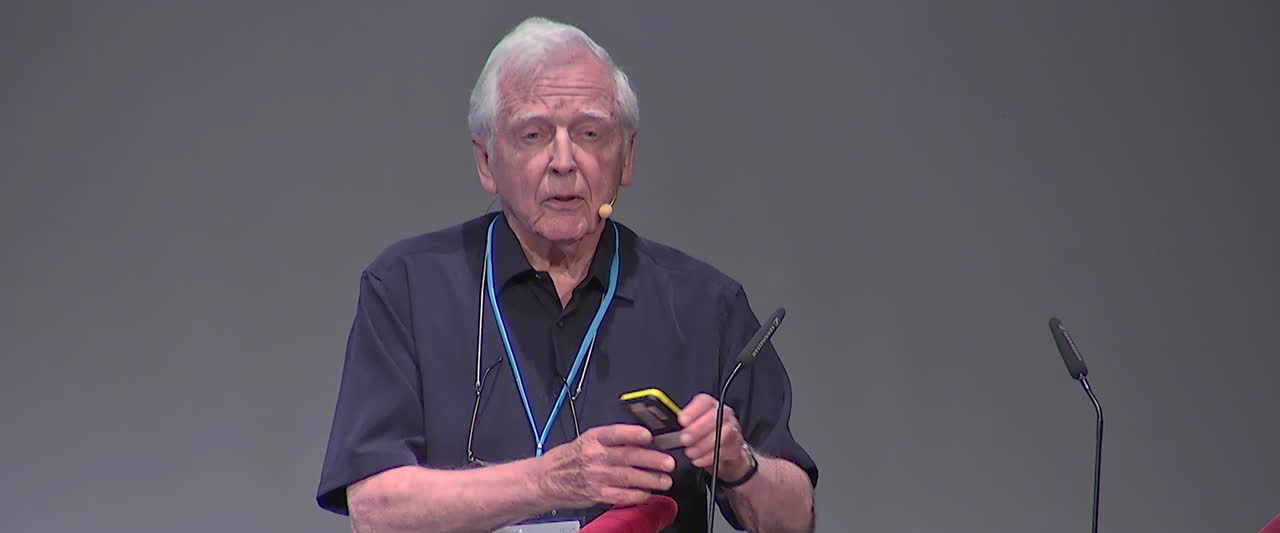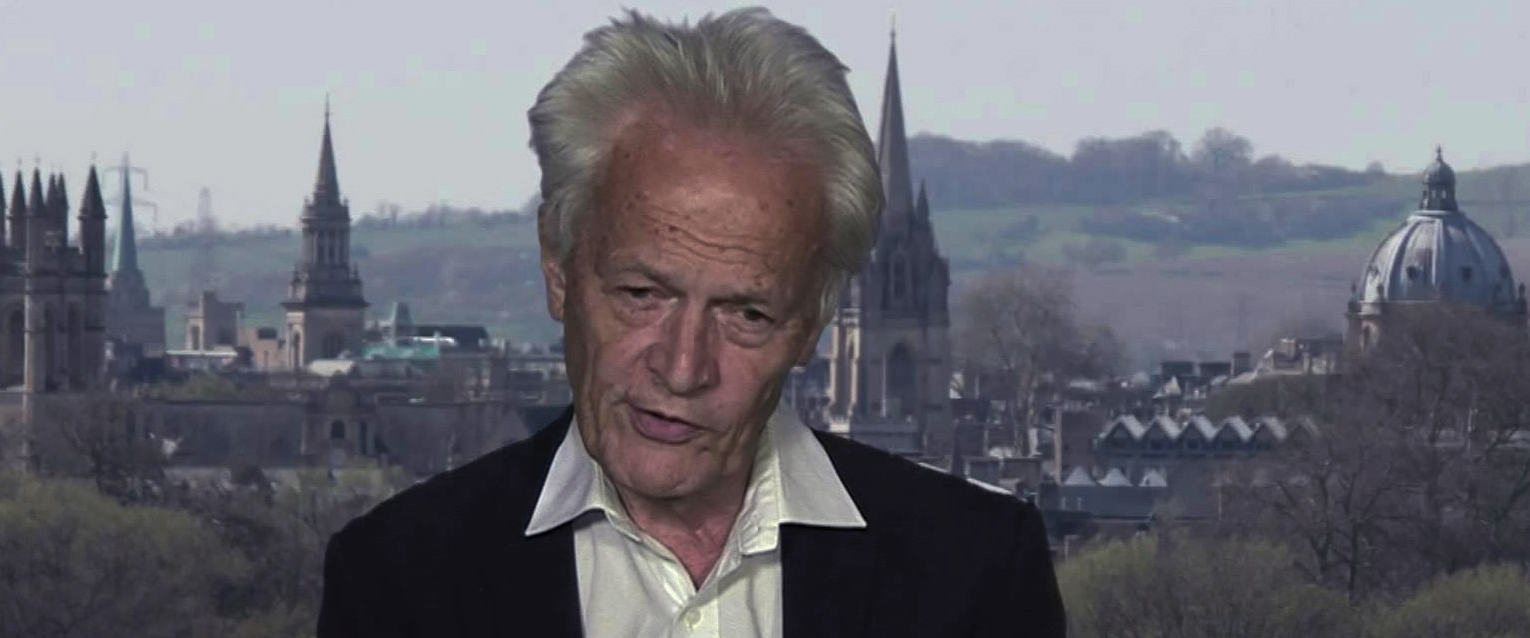News from the Aurora-verse delivered by NMR spectroscopy
14h September 2020. Mark Pfuhl, King's College London.
News from the Aurora-verse delivered by NMR spectroscopy
On the 14th of September Mark Pfuhl of King's College London will give a talk on News from the Aurora-verse delivered by NMR spectroscopy at 5.00 pm. The seminar will be deliverd online due to current restrictions on access to lecture theatres and the link for access is found on the seminar poster that can be downloaded here. All College students are invited to attend, especially those reading Medicine, Biology, Biotechnology and Pharmaceutical Sciences.
Abstract
Aurora-A kinase is an important regulator of the cell cycle and many other processes beyond. It also plays an important role in cancer so that it has become an important drug target. However, the success of Aurora-A targeted drugs at present is rather mixed so that a better understanding of this complex enzyme is required. Aurora-A is an unusual kinase that lacks a canonical on-off switch and its activity can be regulated by a combination of interactions with a plethora of accessory proteins and phosphorylation on multiple sites. I will present how NMR spectroscopy has been used in my group over the past years to make important contributions to better understand this enigmatic protein and its partners. This will include the redefinition of the domain architecture of the XMAP215 family (1), structure determination of a novel cryptic TOG domain (1,2) and its partner 4/5 helix domain (1,4), studies of conformation and interactions of small fragments of TACC3 with Aurora-A kinase (3,5), early stages of the development of novel anti-cancer drugs and a first glimpse of the conformation of the overlooked N-terminus of Aurora-A kinase.
Biography
Mark Pfuhl was born in Berlin where he went to school and where he initially studied Chemistry at the Technische Universität before moving on to Biochemistry at the Freie Universität. After graduating there in 1991 he moved to EMBL Heidelberg where he did his PhD in the group of A Pastore using NMR to determine the first structures of domains of the giant muscle proteins Nebulin and Titin. He finished his PhD in 1995 and - after a brief stint at the Université de Haute Normandie with F Toma in early 1996 - he moved to London on an EMBO long term post doc fellowship to work with P Driscoll at UCL. In 1998 he obtained a Royal Society University Research Fellowship for independent research at UCL. In 2001 he moved to the University of Leicester where he held a Lectureship in addition to his fellowship. In 2010 he returned to London to hold a Readership in cardiovascular structural biology in the then Randall Division of molecular and cellular biophysics. His main scientific interests are the regulation of muscle and kinase function which he studies using mainly NMR spectroscopy supported by other biochemical and biophysical methods.
References
1) “Coordination of adjacent domains mediates TACC3–ch-TOG–clathrin assembly and mitotic spindle binding”, FE Hood, SJ Williams, SG Burgess, MW Richards, D Roth, A Straube, M Pfuhl, R Bayliss, SJ Royle, J. Cell Biol. 202, 463-478, 2013
(2) “Solution NMR assignment of the cryptic sixth TOG domain of mini spindles”, SG Burgess, R Bayliss, M Pfuhl, Biomol. NMR Assign. 9, 1-3, 2015
(3) “Aurora-A dependent control of TACC3 determines the rate of mitotic spindle assembly”, SG Burgess, I Peset, N Joseph, T Cavezza, I Vernos, M Pfuhl, F Gergely, R Bayliss, PLoS Genet 11, 212-221, 2015
(4) “Solution NMR assignment of the C-terminal domain of human chTOG”, E Rostkova, SG Burgess, R Bayliss, M Pfuhl, Biomol. NMR Assign. 22, 604-606, 2018
(5) “Mitotic spindle association of TACC3 requires Aurora-A-dependent stabilization of a cryptic a-helix”, SG Burgess, M Mukherjee, S Sabir, N Joseph, C Gutiérrez-Caballero, MW Richards, N Huguenin-Dezot, JW Chin, EJ Kennedy, M Pfuhl, SJ Royle, F Gergely, R Bayliss, EMBO J. 37, 720-731, 2018
Back on Track
For a few months the Volta website has been silent as much of the communication between the College and its students took place by internal emails.
The Covid-19 pandemic affected our College as it affect other Colleges in Pavia and other Collegiate Universities. But two points clearly emerged from the crisis caused by the SARS Cov-2 virus:
(i) Many Volta students elected to stay in College throughout the lockdown months. Although the College does not have the full data from other Colleges in Pavia it is clear that the occupancy of Volta throughout lockdown has been one of the highest if not the highest across University. And fortunately no Volta student has been infected by the virus or at least not in a recognisable, symptomatic way.
(ii) Volta made the point that teaching ought to continue throughout lockdown and College is indebted and very grateful to the following students (listed alphabetically): A Barone, G Burini, M Freiherr von Wangenheim, V Mangiaterra, S Merlini. D Nodari, O Najlani, I Rosignoli and the following external students or post-doctoral fellows (in alphabetical order): S Burgess, S Fofou Fotchi, P Minerba (a Volta alumnus), M Musci, E Naldi and I Rossinelli.
Together these students and post docs delivered 168 hours of Course material and 264 of supervisions, the majority of which was offered online, often with the help of graphic tables and unquestionably the teaching that College carried out notwithstanding Covid-19 and the ensuing lockdown contributed in a major way to the strong academic results achieved by the members of Volta by the end of July deadline and to be presented at the General Assembly that will take place early in October.
Volta and its members sincerely hope that the worst of the SARS Cov-2 may now be over but the College will maintain the strictest vigilance and enforce tight discipline in order to try and keep the virus outside the College boundaries and enable our students to have a safe and productive 2020/21 academic year at Volta.
Blood Stem Cells
On the 5th of December Ryohichi Sugimura of the Center for iPS Cell Research and Application at Kyoto University will give a talk on Spatial-Temporal Regulations in Human Developmental Haematopoiesis at 5.00 pm in the College lecture theatre (Collegio A Volta).
All students are invited to attend, especially those reading Medicine, Biology, Biotechnology and Pharmaceutical Sciences.
The poster of the lecture can be downloaded here. Further information about the speaker and seminar is available at a dedicated web page.
Metabolic profiling
On the 28th of November 2019 Mattia Zampieri, ETH Zurich, will give a seminar entitled Using metabolic fingerprints to rationally design combination therapies at 2.00 pm in the College lecture theatre (Collegio A Volta).
All students are invited to attend, especially those reading Medicine, Biology, Biotechnology and Pharmaceutical Sciences. The poster of the lecture can be downloaded here. Further information about speaker and seminar can be found on a dedicated web page.
Genome engineering
On the 14th of November 2019 Carlo Cosimo Campa, ETH Zurich, will give a seminar entitled Multiplexed genome engineering by Cas12a and CRISPR arrays encoded on single transcripts at 5.00 pm in the College lecture theatre (Collegio a Volta).
All students are invited to attend, especially those reading Medicine, Biology, Biotechnology and Pharmaceutical Sciences. The poster of the lecture can be downloaded here. Further details of seminar and speaker are available on a dedicated page.
Image courtesy of T Hesman Saey and Science magazine (see: CRISPR enters its first human clinical trials).
Haematopoietic Stem Cells
5h December 2019. Ryohichi Sugimura, Kyoto University.
Spatial-Temporal Regulations in Human Developmental Hematopoiesis
On the 5th of December Ryohichi Sugimura of the Center for iPS Cell Research and Application (CiRA) at Kyoto University will give a talk on Spatial-Temporal Regulations in Human Developmental at 5.00 pm in the College lecture theatre (Collegio A Volta). All students are invited to attend, especially those reading Medicine, Biology, Biotechnology and Pharmaceutical Sciences. The poster of the lecture can be downloaded here.
Abstract
Blood cells sustain life through oxygen supply and resistance to infection. The hematopoietic system is a source of limitless production of blood cells. Genetic and environmental defects in this system causes hematologic cancers, anemias, and bone marrow failure syndromes. The ultimate goal of our study is to produce blood cells on petri dish so that can be transfused to patients [1]. To do so, understanding how blood cells develop in our body is essential. Blood cell development depends on network of cells. I propose the organ-on-a-chip platform to study network of cells in blood development [2]. This study will ultimately provide a fundamental molecular mechanism of human blood cell development.
Biography
My academic background comprises ten years of professional research experience as a stem cell biologist. I studied the role of microenvironmental signals in the maintenance of hematopoietic stem cells [3,4] and identified gene regulatory networks able to induce the formation of hematopoietic stem cells from human pluripotent stem cells [1]. At iPS Cell Research and Application (CiRA) based at Kyoto University, my research program focuses on understanding molecular mechanisms of human developmental hematopoiesis. My career goal is to contribute to regenerative medicine by bridging expertise in human developmental hematopoiesis and pluripotent stem cells.
References
[1] Sugimura, R., Jha, D., Han, A., Soria-Valles, C., da Rocha, E., Lu, Y., Goettel, J., Serrao, E., Rowe, R., Malleshaiah, M., Wong, I., Sousa, P., Zhu, T., Ditadi, A., Keller, G., Engelman, A., Snapper, S., Doulatov, S., Daley, G. (2017)
Hematopoietic Stem and Progenitor Cells from Human Pluripotent Stem Cells.
Nature. 545, 432-438.
[2] Ohta, R*., Sugimura, R*., Niwa, A., Saito, M. (2019)
Hemogenic Endothelium Differentiation from Human Pluripotent Stem Cells in A Feeder- and Xeno-Free Defined Condition.
Journal of Visualized Experiments.
[3] Sugimura, R., He, X.C., Venkatraman, A., Arai, F., Box, A., Semerad, C., Haug, J., Peng, L., Zhong, X., Suda, T., Li, L. (2012).
Noncanonical Wnt signaling maintains hematopoietic stem cells in the niche.
Cell. 150, 351-365.
[4] Venkatraman, A., He, X.C., Thorvaldsen, J., Sugimura, R., Perry, P., Tao, F., Zhao, M., Christenson, M., Sanchez, R., Yu, J., Peng, L., Haug, J., Paulson, A., Li, H., Zhong, X., Clemens, T., Bartlomei, M., Li, L. (2013).
Maternal-imprinting at H19-Igf2 locus maintains adult hematopoietic stem cell quiescence.
Nature. 500, 345-349.
Metabolic Fingerprinting
28h November 2019. Mattia Zampieri, ETH, Zurich.
Using metabolic fingerprints to rationally design combination therapies
On the 28th of November 2019 Mattia Zampieri, ETH Zurich, will give a seminar entitled Using metabolic fingerprints to rationally design combination therapies at 2.00 pm in the College lecture theatre (Collegio A Volta). All students are invited to attend, especially those reading Medicine, Biology, Biotechnology and Pharmaceutical Sciences. The poster of the lecture can be downloaded here.
Abstract
Despite rapid technological progress, the discovery of novel antibiotics has been stalled for the past 50 years. To combat the growing burden of antibiotic resistance, innovative drug discovery paradigms are required to improve and expedite the antibiotic discovery process. A crucial bottleneck in drug discovery is the identification of compounds’ Mode of Action (MoA). To address this problem we developed a rapid and systematic metabolome profiling strategy to classify the MoA of bioactive compounds. In contrast to existing methods based on phenotypic drug profiling, mostly on the basis of growth assays, we exploit here the intracellular response of about 1000 metabolites as a truly multiparametric readout of the cellular response. The specific advance over existing metabolic platforms is a faster throughput of 1-2 orders of magnitude, allowing our combined MS-based metabolomics and computational workflow to scale with the size of typical compound libraries. I will illustrate how this technology enables monitoring the metabolic response of Escherichia coli to 1279 human targeted drugs and revealed an unexpectedly large spectrum of metabolic effects in E. coli. Combining metabolic profiling with chemogenomic data, we predicted drug MoAs and epistatic drug interactions. Our approach opens new opportunity in systems pharmacology and reveals new ways to expand the search for new antimicrobial treatments to compounds with no growth-inhibitory activity (keywords: Metabolomics, Antibiotics, Drug Mode of Action).
References
Campos A, Zampieri M*. Metabolomics-driven exploration of the chemical drug space to predict synergistic antimicrobial effects. Molecular Cell 2019.
Biography
Mattia Zampieri is a junior PI at the Institute of Molecular Systems Biology of ETH in Zurich. He studied Bioengineering in Padova before doing a PhD in Bioinformatics at the International School for Advanced Studies in Trieste and Boston University. During his PhD he worked on mathematical modeling of microbial metabolism and reverse engineering transcriptional regulatory network from molecular profiling data. In 2011 he moved to the lab of Prof. Uwe Sauer at ETH where he developed novel high throughput metabolomics frameworks and quantitative models to study the role of microbial metabolism in mediating the response to antimicrobial treatments. His research led to unique high-throughput metabolomics frameworks and computational tools broadly applicable to diverse biological systems and therapeutic areas, opening new opportunities in systems biology and systems pharmacology
Image
Bioblasts (Odra Noel, Wellcome Collection)
Genome engineering
14th November 2019. Carlo C Campa, ETH, Zurich.
Multiplexed genome engineering by Cas12a and CRISPR arrays encoded on single transcripts
On the 14th of November 2019 Carlo Cosimo Campa, ETH Zurich, will give a seminar entitled Multiplexed genome engineering by Cas12a and CRISPR arrays encoded on single transcripts at 5.00 pm in the College lecture theatre (Collegio a Volta). All students are invited to attend, especially those reading Medicine, Biology, Biotechnology and Pharmaceutical Sciences. The poster of the lecture can be downloaded here.
Abstract
The ability to modify multiple genetic elements simultaneously would help to elucidate and control the gene interactions and networks underlying complex cellular functions. However, current genome engineering technologies are limited in both the number and the type of perturbations that can be performed simultaneously. Here, we demonstrate that both Cas12a and a clustered regularly interspaced short palindromic repeat (CRISPR) array can be encoded in a single transcript by adding a stabilizer tertiary RNA structure. By leveraging this system, we illustrate constitutive, conditional, inducible, orthogonal and multiplexed genome engineering of endogenous targets using up to 25 individual CRISPR RNAs delivered on a single plasmid. Our method provides a powerful platform to investigate and orchestrate the sophisticated genetic programs underlying complex cell behaviours.
References
[1] Multiplexed genome engineering by Cas12a and CRISPR arrays encoded on single transcripts. Campa et al., Nature Methods, 2019
Biography
Carlo Campa has a background in industrial biotechnology (B.Sc. and M.Sc. – University of Turin). He started his PhD studies at the PI3Ks Signalling Laboratory of University of Turin (Prof. Emilio Hirsch). For his postdoc, he moved to ETH Zurich at the Laboratory of Biological Engineering (Prof. Randall J. Platt – ETH Zurich) where his research activities are focused on the development of novel genome engineering tools. He has provided seminal contributions in the characterization of membrane dynamics and lipid signalling in embryogenesis and immunity (Developmental Cell 2014, Science Signalling, 2016, J. Immunol. 2013). Together with Kither Biotech s.r.l. he developed and exploited inhibition of lipid signalling to treat chronical airway diseases (Nature Communication 2018). He demonstrated the role of endosomes as a signalling platform in embryo development, and insulin resistance (Developmental Cell 2014, Nature Communication 2015). He defined that temporal control of signalling events provides a strategy to govern stochastic egression of neutrophils from the bone marrow (Science Signalling, 2016). He realized the first class of biosensors able to detect signalling events on endosome membrane microdomains and he provided the evidence that activation of endosomal signalling enables receptors exit from endosomes (Nature Chem. Biol 2018). Recently, he assessed the scaffold function of a lipid kinase in cancer resistance (Cancer Cell 2017) and I generated new genome editing tools for fast rewiring of complex pathways in cells (Nature Methods, 2019). By conducting investigations at the interface between biology, mathematics and engineering, he has aimed at defining both the design principles and the molecular mechanisms by which cells make decisions.
Image
Cell division and gene expression in plant cells (Fernan Federici & Jim Haseloff, Wellcome Collection)
Teaching at Volta
A number of graduate and mature undergraduate students have applied for roles in College teaching (courses or spervisions) or support jobs (library). There are several teaching roles, however, which are still unfilled and College invites young University academic staff of the University of Pavia (assegnisti di ricerca and ricercatori) to express their interest in fullfilling the roles below:
31. Writing a Dissertation (6 hour course)
32. Career Advice (6 hour course)
33. Web Design (12 hour course)
34. LaTeX (12 hour course)
35. Computer Coding (12 hour course)
Days and hours of teaching are flexible but all College teaching takes place after 5.00 pm and typically after 6.00 pm. Further details can be found in the original call of interest available on the EDiSU website. Interested candidates should fill the form available here and return it by email to E Gherardi.
English Courses
The English Courses will start on Monday the 18th of November. A total of 43 College students enrolled in the Courses and have been assigned to a B1, B2 or C1 class. Thet wo main Courses (B1 and C1 will be held in College) with lessons every week on Monday (B1) or Thursday (C1) iat 6.00 pm. Seven students who have been assigned to the B2 Course will attend their Course at Collegio Cairoli and, conversely, students from other Colleges enrolled in the C1 Course will all attend the Course at Volta).
All College students studying English are entitled to borrow and use a IETLS textbook, provided by College, and the College Office has alreadt issued instructions about book collection.
Finally all College students who entered Emglish Courses are asked to attend a brief meeting on Monday 18th at 6.00 pm in order to clarify attendance rules and records.
More...
Dissecting cytosine modifications
31st October 2019.
Francesco Spallotta, Institute for Cancer Research, Candiolo
On the 31st of October 2019 Francesco Spallotta of the Institute for Cancer Research in Candiolo will give a seminar entitled Vaccines: Dissecting cytosine modifications at 2.00 pm in the College Lecture Theatre. In his talk F Spallotta will discuss recent advances in the understanding how chemical modifications of cytosine, one of the four bases found in DNA, can affect gene expression not only during embryogenesis and in normal tissues but also in major diseases such as diabetes and cancer. The poster of the seminar can be downloaded here. All College students are warmly invited to participate.
Abstract
Cytosine methylation harnesses chromatin plasticity and gene transcription affecting cell functions and fate. Recently an active biological role has been assigned to different stable cytosine iterative modifications enriched during DNA demethylation cycle including 5-hydroxy- and 5-formyl-cytosine. Metabolite availability directly regulates DNA (de)methylation enzymatic machinery, as the involved enzymes, DNA methyltransferases, Tet methylcytosine dioxygenases (TETs) and Thymine DNA Glycosylase (TDG), exploit S-Adenosyl methionine and α-ketoglutarate (αKG) to exert their activity. Consequently, metabolite availability can ultimately influence the levels of different cytosine modifications. In this light, in the tumor microenvironment, the balance between αKG and oncometabolites, including 2-hydroxyglutarate (2HG), succinate and fumarate, plays a crucial role in the regulation of DNA demethylation. In first part of my talk, I will show how chronic metabolic derangement associated to type 2 diabetes and cancer affects intracellular balance between αKG and 2HG, thus altering DNA (de)methylation cycle. Specifically, we recently published that cardiac mesenchymal cells isolated from diabetic donors show reduced levels of αKG in comparison to the ones isolated from normoglycemic donors. The decreased availability of αKG associates to an altered cytosine methylation pattern consequence of a compromised TET/TDG association and function with TET1 relocation out of the nucleus. In the second part of the talk, I will show preliminary data about the effect of chronic dysmetabolism, achieved by high-fat diet, on a genetically engineered mouse model of pancreatic ductal adenocarcinoma (PDAC). Specifically, I will show the impact of dysmetabolism on the αKG/oncometabolite balance and the cytosine modification levels. Moreover, the effect of oncometabolite enrichment on pancreatic stellate cells and cancer associated fibroblasts isolated from pancreas of PDAC patients will be discussed. Lastly, the efficacy of epi-metabolic compounds, aimed at restoring the epi-metabolic control of DNA methylation cycle, will be showed in rescuing type 2 diabetes-dependent cardiac features and in preventing breast cancer associated lung metastasis. Specifically, the novel compound (S)-2-[(2,6-dichlorobenzoyl)amino]succinic acid (AA6), identified as an inhibitor of αKG dehydrogenase, increased the αKG level in diabetic cardiac mesenchymal cells and in the heart of hyperglycemic mouse models eliciting DNA demethylation, glucose uptake, and insulin response. The same compound was tested in an orthotopic mouse model of breast cancer. Also in this context, AA6 altered Krebs cycle causing intracellular αKG accumulation and, consequently, the activity of TETs was restored. In mice, AA6 injection reduced metastasis formation and increased 5hmC levels in primary tumours. This epigenetically remodelled metabolic environment efficiently counteracted the initiating steps of tumour invasion inhibiting the epithelial-to-mesenchymal transition (EMT).
Reference
[1] Spallotta F et al., Stable Oxidative Cytosine Modifications Accumulate in Cardiac Mesenchymal Cells From Type2 Diabetes Patients: Rescue by α-Ketoglutarate and TET-TDG Functional Reactivation. Circ Res. 2018 Jan 5;122(1):31-46.
[2] Atlante S et al., α-ketoglutarate dehydrogenase inhibition counteracts breast cancer-associated lung metastasis. Cell Death Dis. 2018 Jul 9;9(7):756.
[3] Kohli RM et al., TET enzymes, TDG and the dynamics of DNA demethylation. Nature 2013;502:472-9.
Biography
F. Spallotta is a senior research fellow at Department of Oncology, Turin University (Turin-Italy) located at Candiolo Cancer Institute FPO-IRCCS. From 2005 to 2010 he was Master of Science student and PhD student at the Vascular Pathology Laboratory of the "Istituto Dermopatico dell'Immacolata-IRCCS" (Rome-Italy). From 2010 to 2012 he accomplished his PhD in Experimental Medicine and started his postdoctoral training at the Vascular Biology and Regenerative Medicine Laboratory of the “Centro Cardiologico Monzino-IRCCS” (Milan-Italy). From 2012 to 2018 he was one of the former postdoctoral fellow at the Division of Cardiovascular Epigenetics at Goethe University (Frankfurt am Main-Germany). Moving from one lab to another was extremely stimulating and enriched his background, giving him the opportunity to contribute to several research projects. F Spallotta has a strong expertise in cellular and molecular biology and he is extremely proficient with many cellular and in vivo models suitable to study different physio-pathological context. Since 2005, he worked in the field of epigenetics pointing out novel molecular mechanisms underpinning onset and progression of different human diseases. Since 2014, he started to explore the link between epigenetics and metabolism, especially in response to dysmetabolic contexts associated with diabetes, aging and cancer and established following specific dietary regimens, including high fat diet, fast mimicking diet and ketogenic diet. Recently he elucidated an altered DNA methylation pattern associated with reduced level of α-ketoglutarate in mesenchymal cardiac cells isolated from type-2 diabetic patients pointing out a mechanism at the molecular base of the so called “hyperglycemic memory” responsible for cardiovascular complications in diabetes. Moreover, he characterized the contribution of the same metabolite, α-ketoglutarate, during breast cancer-associated lung metastasis. At present he is investigating the link between colorectal cancer and pancreatic ductal adenocarcinoma with diabetes and obesity. In all his studies he applied integrative OMICS analysis by performing DNA methylome sequencing, ChIP-sequencing, RNA-sequencing and metabolome analysis.
Image
Courtesy of Kieran Blakey.
Epigenetics and Disease
F Spallotta, a scientist at the Institute for Cancer Research in Candiolo (Italy) will give a seminar tomorrow Thursday the 31st of October at 2.00 pm in the College lecture theatre on the role of epigenetic processes in diseases such as diabetes and cancer. Epigenetic changes are subtle but stable chemical modifications of the genetic material (DNA) that influence in a fundamental way gene activity during development as well as in disease. The speaker will also address the prospect that new drugs interfering with the biochemical pathways responsible for epigenetic changes may find important applications in diabetes and cancer.
All College students are invited to participate, notably natural science and medical students. The poster of the seminar can be downloaded here. Further information about the seminar and speaker can be found at this page.
Image courtesy of the Memorial Sloan Kettering Cancer Center.
Students Committees 2019/20
In October 2019 College students elected a new, 6 member strong executive of the Volta Students' Union (3 undergraduates and 3 postgraduates). Elected committee members are listed below.
Volta Students' Union Executive
Name: Giulia Bonasegale (President)
Course: Chemistry, Year 2
Roles:
Name: Giacomo Maggiorano
Course: Mathematics, Year 2
Reoles:
Name: Davide Gianatti
Course: Physics, Year 2
Roles:
Name: Diego Riva
Course: Physics, Year 1 (MSc)
Roles:
Name: Alessandra Ria
Course: Molecular Biology and Genetics, Year 1 (MSc)
Roles:
Name: Gianluca Lombardo
Course: Molecular and Cellular Biology and Genetics, Year 2 (PhD)
Roles:
VSU Committee Elected
College students have casted their votes for election of the new executive of the Volta Student Union for the academic year 2019/20. A total of 110 students (67 undergraduates and 43 postgraduates) have taken part in the election and the results have been as follows (candidates in alphabetical order):
Undergraduates
G Bonasegale (31)
D Gianatti (14 votes)
G Maggiorano (22)
Postgraduates
G Lombardo (9)
A Ria (12)
D Riva (12)
M Silvestri (6)
The members of the VSU Committee for 2019/20 are D Gianatti, G Maggiorano, G Bonasegale, A Ria, D Riva and G Lombardo. G Bonasegale will act as Committee secretary.

























 Articles
Articles